Milkweeds Play an Essential Role in American Ecosystems and Gardens
In the tapestry of American flora, few plants play as crucial a role as the humble milkweed. These often-overlooked species, all members of the genus Asclepias, are not mere roadside weeds but essential pillars of biodiversity across the United States. From the sun-baked prairies of the Midwest to the coastal plains of the Southeast, milkweeds have adapted to an impressive array of ecosystems, each species a testament to nature’s ingenuity.

The mutualistic relationship between Asclepias (milkweed) and monarch butterflies (Danaus plexippus) is a remarkable example of coevolution and ecological interdependence. Monarch butterflies rely exclusively on milkweed plants for reproduction and survival. Female monarchs lay their eggs on the leaves of milkweed, which provide the sole food source for the emerging caterpillars. These caterpillars have evolved to detoxify and sequester the toxic cardiac glycosides found in milkweed, making them unpalatable to predators. This specialized adaptation not only ensures the caterpillars’ survival but also contributes to the butterflies’ defense mechanisms throughout their life stages. Additionally, adult monarchs feed on the nectar of milkweed flowers, which fuels their long migrations to overwintering sites in Mexico and California.
While most famous for their relationship with monarch butterflies, milkweeds support a complex web of life that extends far beyond these charismatic insects. Their nectar-rich flowers attract a diverse array of pollinators, while their tough fibers and toxic sap have sparked human innovation and medical research. As climate change and habitat loss threaten many native plant communities, understanding and preserving our native milkweeds has never been more critical.
The 12 species listed below are native to the U.S. and often offered by some native plant nurseries as live plants or as seeds. They are all excellent contributors to a well-designed biodiversity-friendly garden.
Butterfly Milkweed (Asclepias tuberosa)
Butterfly Milkweed, scientifically known as Asclepias tuberosa, is a perennial plant native to North America. This species is highly valued for its vibrant orange flowers and its role in supporting pollinator populations, particularly Monarch butterflies.
The plant features clusters of bright orange or yellow flowers that bloom from early summer to early autumn. These blooms are highly attractive to a variety of pollinators, including bees, butterflies, and hummingbirds.
Gardening Tips:
- Planting Location: Prefers full sun and well-drained soils.
- Garden Use: Suitable for wildflower meadows, pollinator gardens, and borders.
- Companion Plants: Complements other sun-loving perennials like coneflowers and black-eyed Susans.
- Maintenance: Drought-tolerant; minimal watering once established.

Sand Milkweed (Asclepias arenaria)
Sand Milkweed, scientifically known as Asclepias arenaria, is a striking perennial that thrives in sandy soils, making it a resilient choice for dry, arid landscapes. This species is particularly well-suited for xeriscaping and native plant gardens, where water conservation is a priority.
The plant boasts clusters of small, greenish-white flowers that bloom from late spring to early summer. These blossoms not only add a delicate beauty to the garden but also attract a variety of pollinators, including bees and butterflies, making it an essential component of any pollinator-friendly garden.
Gardening Tips:
- Planting Location: Ideal for dry, sandy soils and full sun.
- Garden Use: Excellent for xeriscaping, rock gardens, and sandy beds.
- Companion Plants: Pairs well with other drought-tolerant plants like yucca and agave.
- Maintenance: Minimal watering once established; thrives in poor soils.
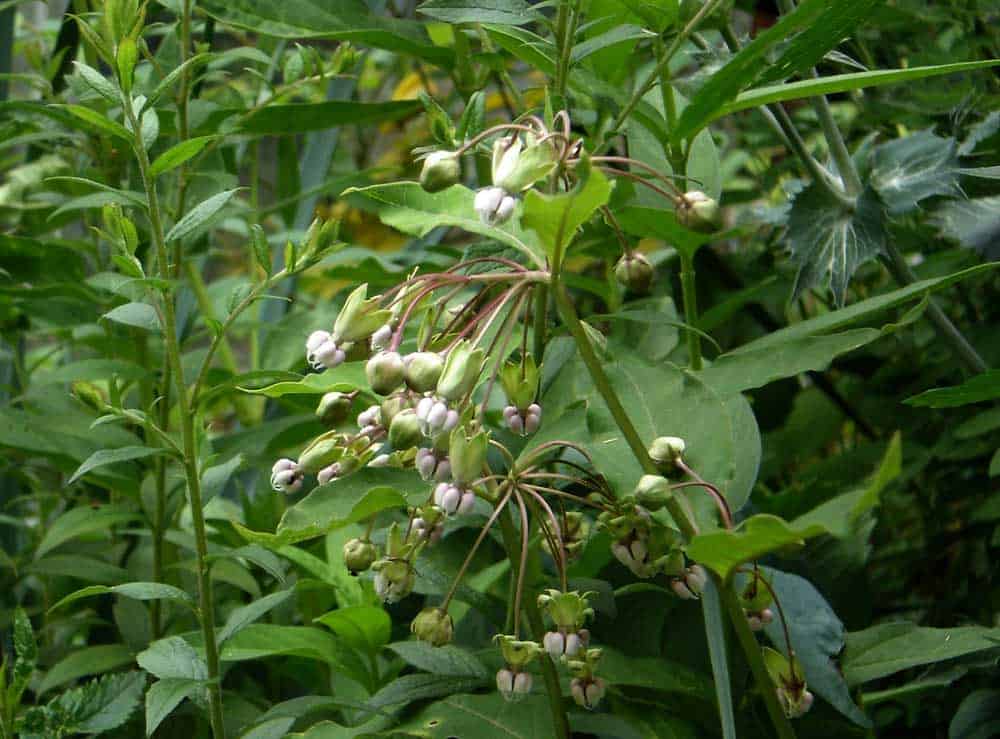
Poke Milkweed (Asclepias exaltata)
Poke Milkweed, or Asclepias exaltata, is a perennial plant known for its unique and appealing floral display. Native to North America, it thrives in partial shade and moist, well-drained soils, making it a perfect addition to woodland gardens and shaded landscapes.
The flowers of Poke Milkweed are particularly attractive, with their drooping, bell-shaped blossoms that are white to pale green, often tinged with pink. These blooms appear in early summer and are highly attractive to pollinators, especially bees and butterflies.
Gardening Tips:
- Planting Location: Prefers partial shade and moist, well-drained soils.
- Garden Use: Ideal for woodland gardens and shaded borders.
- Companion Plants: Complements ferns, hostas, and other shade-loving plants.
- Maintenance: Keep soil consistently moist; minimal care needed once established.

Hall’s Milkweed (Asclepias hallii)
Hall’s Milkweed, also known as Purple Silkweed, is scientifically referred to as Asclepias hallii. This perennial plant is native to the southwestern United States, where it thrives in sandy or rocky soils. Its resilience and adaptability make it an excellent choice for gardens in arid and semi-arid regions.
The plant is best known for its striking flowers, which are a vivid purple to pink color. These blooms appear in clusters at the top of the stems, creating a stunning visual display from late spring to early summer.
Gardening Tips:
- Planting Location: Full sun and well-drained, sandy, or rocky soils.
- Garden Use: Suitable for rock gardens, wildflower meadows, and dry borders.
- Companion Plants: Pairs well with other native wildflowers and grasses.
- Maintenance: Drought-tolerant; requires minimal watering once established.

Swamp Milkweed (Asclepias incarnata)
Swamp Milkweed, also known as Rose Milkweed, is scientifically named Asclepias incarnata. This perennial plant is native to North America and is typically found in wetlands and moist meadows. It is an excellent choice for gardeners looking to add both beauty and biodiversity to their gardens.
The plant features clusters of fragrant, pink to mauve flowers that bloom from mid-summer to early fall. These flowers are not only visually appealing but also attract a wide range of pollinators, including bees, butterflies, and hummingbirds.
Gardening Tips:
- Planting Location: Prefers full sun to partial shade and moist, well-drained soils.
- Garden Use: Ideal for rain gardens, wetland areas, and along pond edges.
- Companion Plants: Complements other moisture-loving plants like iris and sedges.
- Maintenance: Keep soil moist; suitable for areas with occasional flooding.
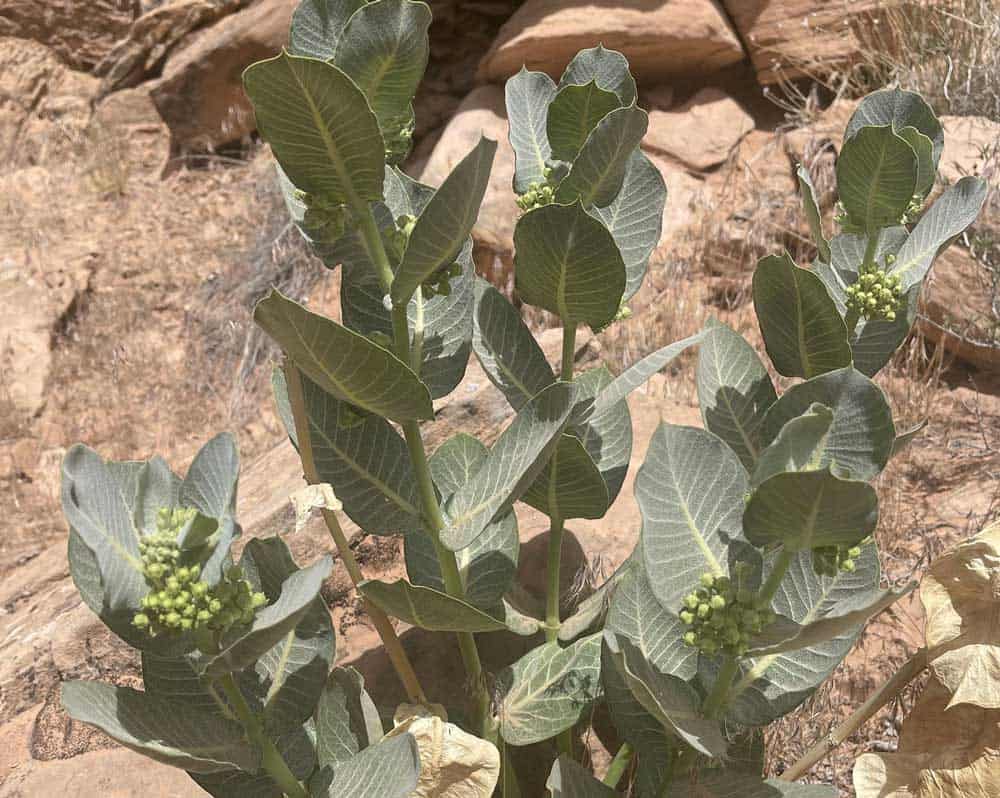
Broadleaf Milkweed (Asclepias latifolia)
Broadleaf Milkweed, scientifically known as Asclepias latifolia, is a perennial plant native to the southwestern United States. This species is well-adapted to dry, rocky soils, making it an excellent choice for xeriscaping and native plant gardens in arid regions.
The plant features broad, oval leaves that provide a lush, green backdrop for its clusters of greenish-white flowers. These blooms appear from late spring to early summer and are highly attractive to a variety of pollinators, including bees and butterflies.
Gardening Tips:
- Planting Location: Full sun and well-drained, rocky soils.
- Garden Use: Suitable for xeriscaping, rock gardens, and dry borders.
- Companion Plants: Complements other drought-tolerant plants like sagebrush and yucca.
- Maintenance: Minimal watering once established; thrives in poor soils.
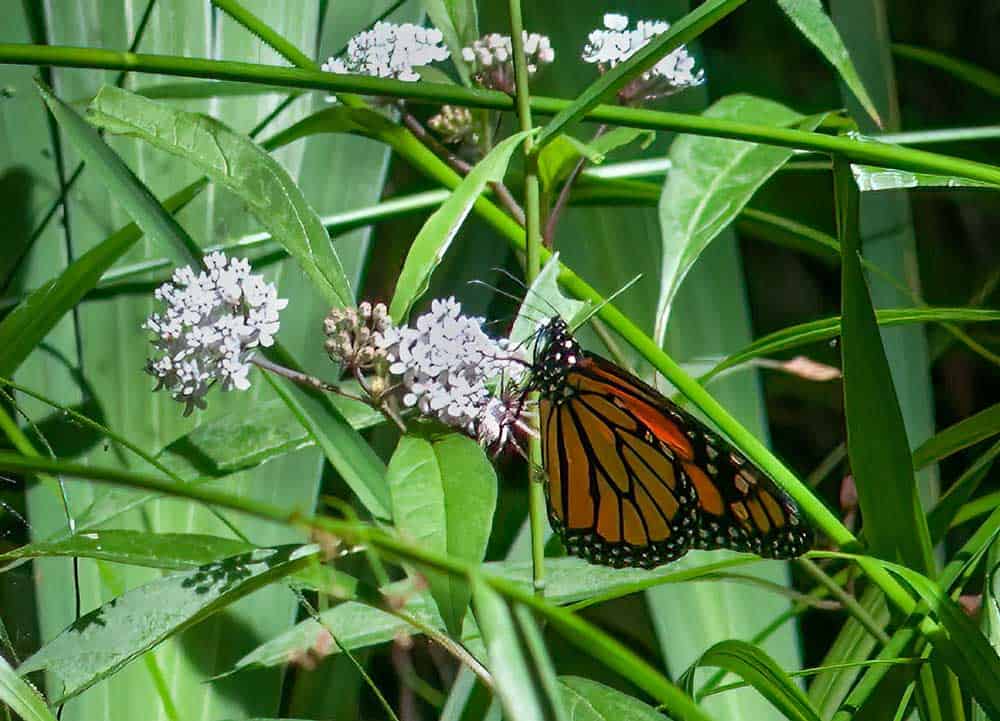
Aquatic Milkweed (Asclepias perennis)
Aquatic Milkweed, scientifically known as Asclepias perennis, is a perennial plant native to the southeastern United States. This species is particularly well-suited for wetland areas, such as pond edges and marshes, where it thrives in consistently moist soils.
The plant features clusters of small, white to pinkish flowers that bloom from late spring to early summer. These delicate blossoms are highly attractive to pollinators, including bees and butterflies.
Gardening Tips:
- Planting Location: Prefers full sun to partial shade and moist, well-drained soils.
- Garden Use: Ideal for rain gardens, wetland areas, and along pond edges.
- Companion Plants: Complements other moisture-loving plants like cardinal flower and marsh marigold.
- Maintenance: Keep soil consistently moist; suitable for areas with occasional flooding.
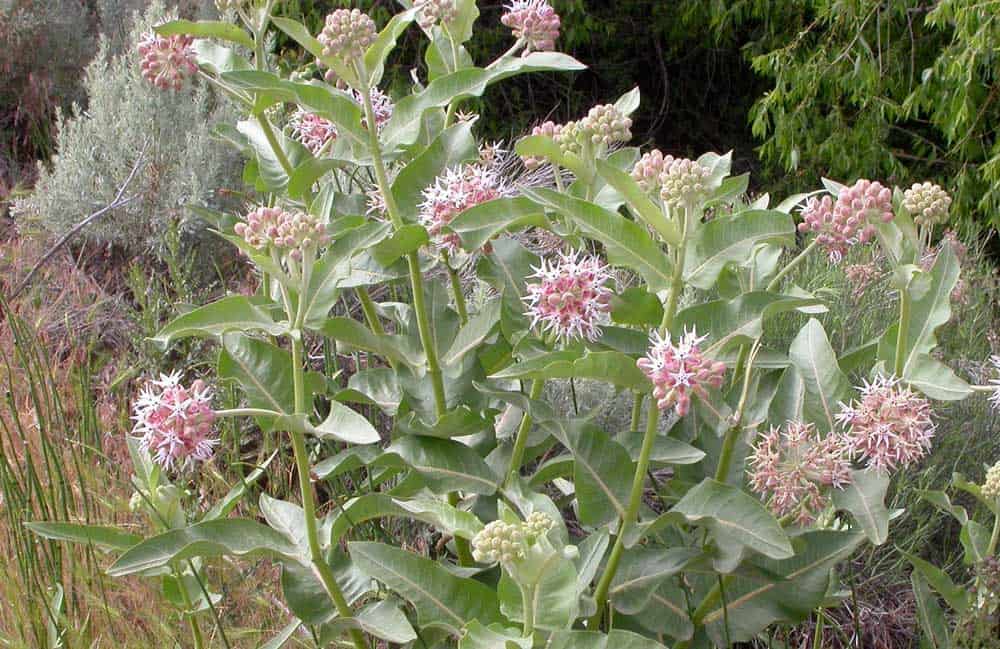
Showy Milkweed (Asclepias speciosa)
Showy Milkweed, scientifically known as Asclepias speciosa, is a perennial plant native to western North America. This species is known for its striking, star-shaped flowers and is an excellent choice for adding visual interest and ecological value to garden landscapes.
The plant features clusters of large, pink to purple flowers that bloom from late spring to early summer. These fragrant blossoms are highly attractive to a variety of pollinators, including bees, butterflies, and hummingbirds.
Gardening Tips:
- Planting Location: Full sun and well-drained soils.
- Garden Use: Suitable for wildflower meadows, pollinator gardens, and native plant borders.
- Companion Plants: Complements other native wildflowers and grasses.
- Maintenance: Drought-tolerant; minimal watering once established.
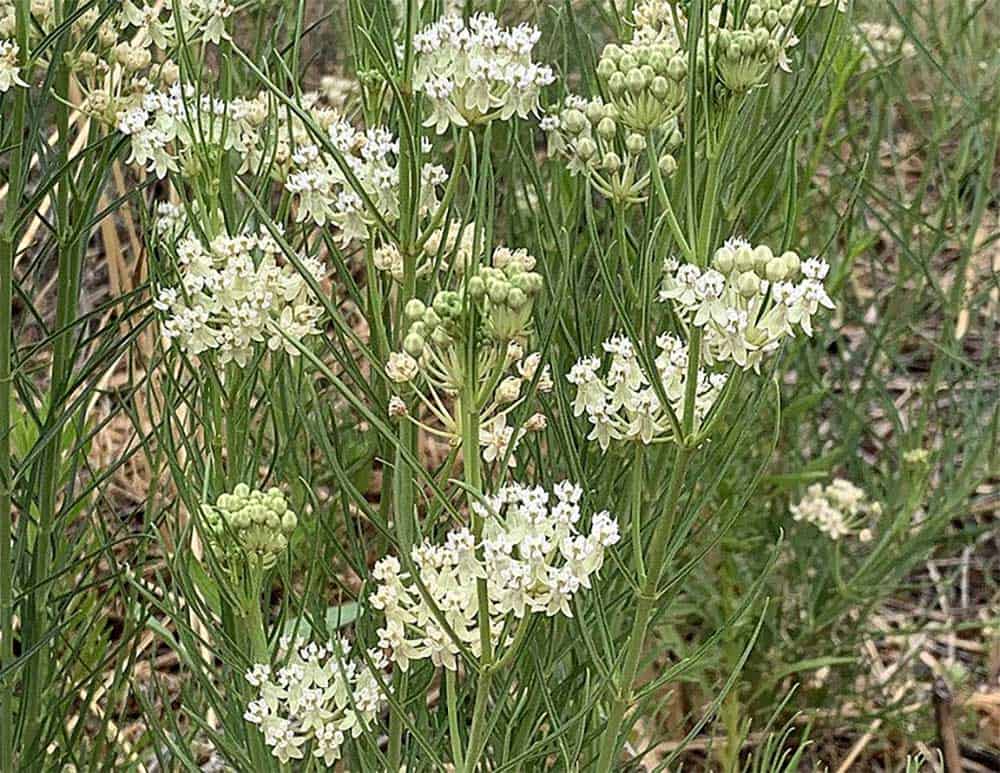
Horsetail Milkweed (Asclepias subverticillata)
Horsetail Milkweed, scientifically known as Asclepias subverticillata, is a unique perennial plant native to the southwestern United States. This species is well-adapted to dry, rocky soils, making it an ideal choice for xeriscaping and native plant gardens in arid regions.
The plant features narrow, needle-like leaves that resemble those of a horsetail, hence its common name. The foliage provides a fine, airy texture that contrasts beautifully with its clusters of small, white flowers. These blooms appear from late spring to early summer and attract a variety of pollinators, including bees and butterflies.
Gardening Tips:
- Planting Location: Prefers full sun and well-drained, rocky soils.
- Garden Use: Suitable for xeriscaping, rock gardens, and dry borders.
- Companion Plants: Complements other drought-tolerant plants like penstemon and agave.
- Maintenance: Minimal watering once established; thrives in poor soils.

Common Milkweed (Asclepias syriaca)
Common Milkweed, scientifically known as Asclepias syriaca, is a robust perennial plant native to North America. This species is well-known for its large, fragrant flower clusters and its crucial role in supporting pollinator populations, particularly Monarch butterflies.
The plant features broad, oval leaves and tall stems that can reach up to six feet in height. The flower clusters are composed of many small, pink to purple blooms that appear in mid-summer. These flowers are highly fragrant and attract a wide range of pollinators, including bees, butterflies, and hummingbirds.
Gardening Tips:
- Planting Location: Full sun and well-drained soils.
- Garden Use: Ideal for naturalized areas, wildflower meadows, and pollinator gardens.
- Companion Plants: Pairs well with other native wildflowers and grasses.
- Maintenance: Can spread aggressively; best in large, open areas where it can form colonies.
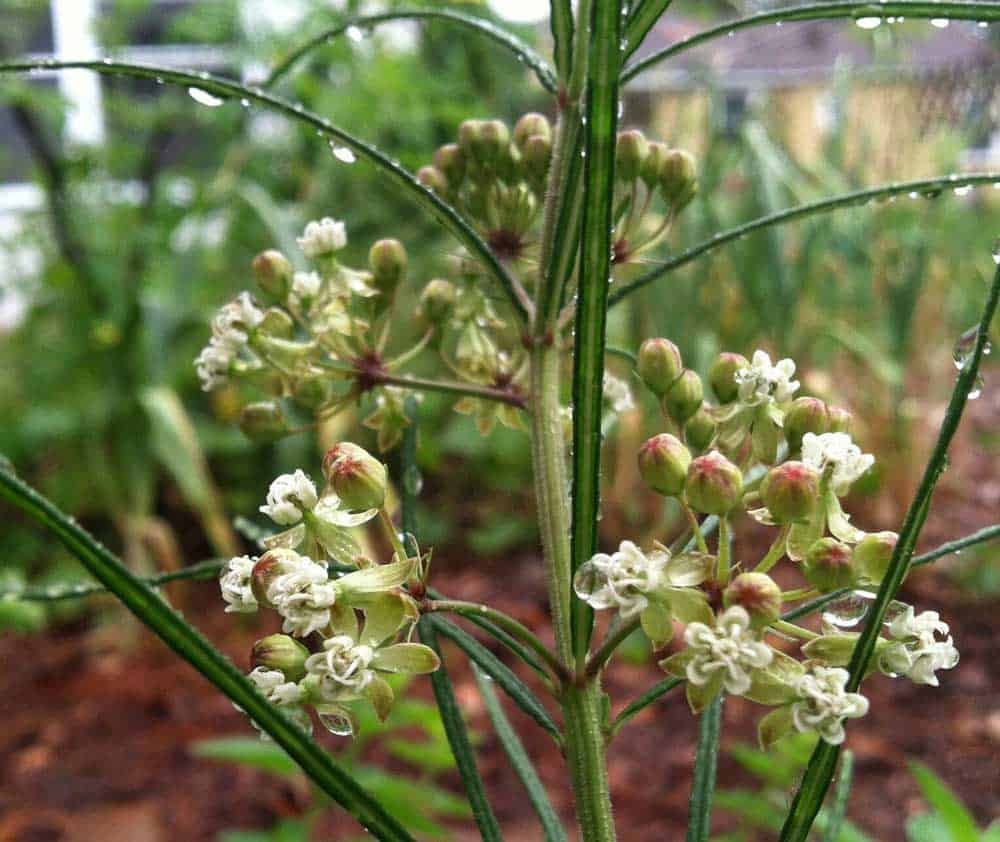
Whorled Milkweed (Asclepias verticillata)
Whorled Milkweed, scientifically known as Asclepias verticillata, is a perennial plant native to North America. This species is characterized by its slender leaves and delicate, white flowers, making it a graceful addition to any garden.
The plant features narrow, whorled leaves that give it a fine, airy texture. The small, white flowers bloom from mid-summer to early fall and are arranged in loose clusters at the tops of the stems. These blooms attract a variety of pollinators, including bees and butterflies.
Gardening Tips:
- Planting Location: Prefers full sun to partial shade and well-drained soils.
- Garden Use: Ideal for naturalized areas, pollinator gardens, and rock gardens.
- Companion Plants: Complements other fine-textured plants like grasses and asters.
- Maintenance: Minimal watering once established; drought-tolerant.

Green Milkweed (Asclepias viridis)
Green Milkweed, also known as Spider Milkweed, is scientifically named Asclepias viridis. This perennial plant is native to the central and southern United States and is well-suited for a variety of garden settings, from wildflower meadows to native plant gardens.
The plant features broad, green leaves and clusters of greenish-white flowers that bloom from late spring to early summer. These unique blossoms are highly attractive to pollinators, including bees and butterflies.
Gardening Tips:
- Planting Location: Prefers full sun and well-drained soils.
- Garden Use: Suitable for wildflower meadows, native plant borders, and pollinator gardens.
- Companion Plants: Complements other native wildflowers and grasses.
- Maintenance: Drought-tolerant; minimal watering once established.
These milkweed species not only enhance the visual appeal of gardens but also play critical roles in supporting pollinator populations. By planting a variety of milkweed species, gardeners can create beautiful landscapes that contribute to the conservation of butterflies, bees, and other beneficial insects.
Many More Invertebrate Relationships
Keep in mind that milkweeds (Asclepias spp.) support a wide variety of invertebrates beyond the well-known monarch butterflies. Milkweeds create a rich and diverse ecosystem that supports numerous invertebrate species, making them an essential component of many habitats. Here are some notable examples:
True Bugs
- Large Milkweed Bug (Oncopeltus fasciatus): These bugs feed on the seeds, leaves, and stems of milkweed plants. They are characterized by their orange-red bodies with black markings.
- Small Milkweed Bug (Lygaeus kalmii): These bugs also feed on milkweed seeds and sometimes on other insects. They are smaller and have a distinctive red and black pattern.
Beetles
- Milkweed Leaf Beetle (Labidomera clivicollis): This beetle feeds on the leaves of milkweed plants and is easily recognizable by its bright orange and black coloration.
- Red Milkweed Beetle (Tetraopes tetrophthalmus): Another leaf feeder, this beetle is red with black spots and is often found on milkweed plants.
Moths
- Milkweed Tussock Moth (Euchaetes egle): The caterpillars of this moth are known for their gregarious feeding habits and striking black, white, and orange tufts of hair. They feed on milkweed leaves.
Aphids
- Milkweed Aphid (Aphis nerii): These small, yellow aphids feed on the sap of milkweed plants and are often tended by ants for their honeydew.
Bees and Wasps
- Honey Bees and Native Bees: Milkweed flowers provide nectar for various bee species, including honey bees and native bees, which are important pollinators.
- Parasitic Wasps: These wasps are attracted to milkweed for nectar and also help control pest populations by parasitizing other insects.
Flies
- Tachinid Flies: These parasitic flies, such as Trichopoda pennipes, are attracted to milkweed and lay their eggs on other insects like stink bugs, which their larvae will parasitize.
Ants
- Ants are frequently found on milkweed plants, often farming aphids for their honeydew or preying on other small insects.
Spiders
- Crab Spiders and Other Predatory Spiders: These spiders use milkweed plants as hunting grounds, preying on various insects that visit the plants.
Header image: “Asclepias Speciosa (Showy Milkweed)” by OregonDOT is licensed under CC BY 2.0.
